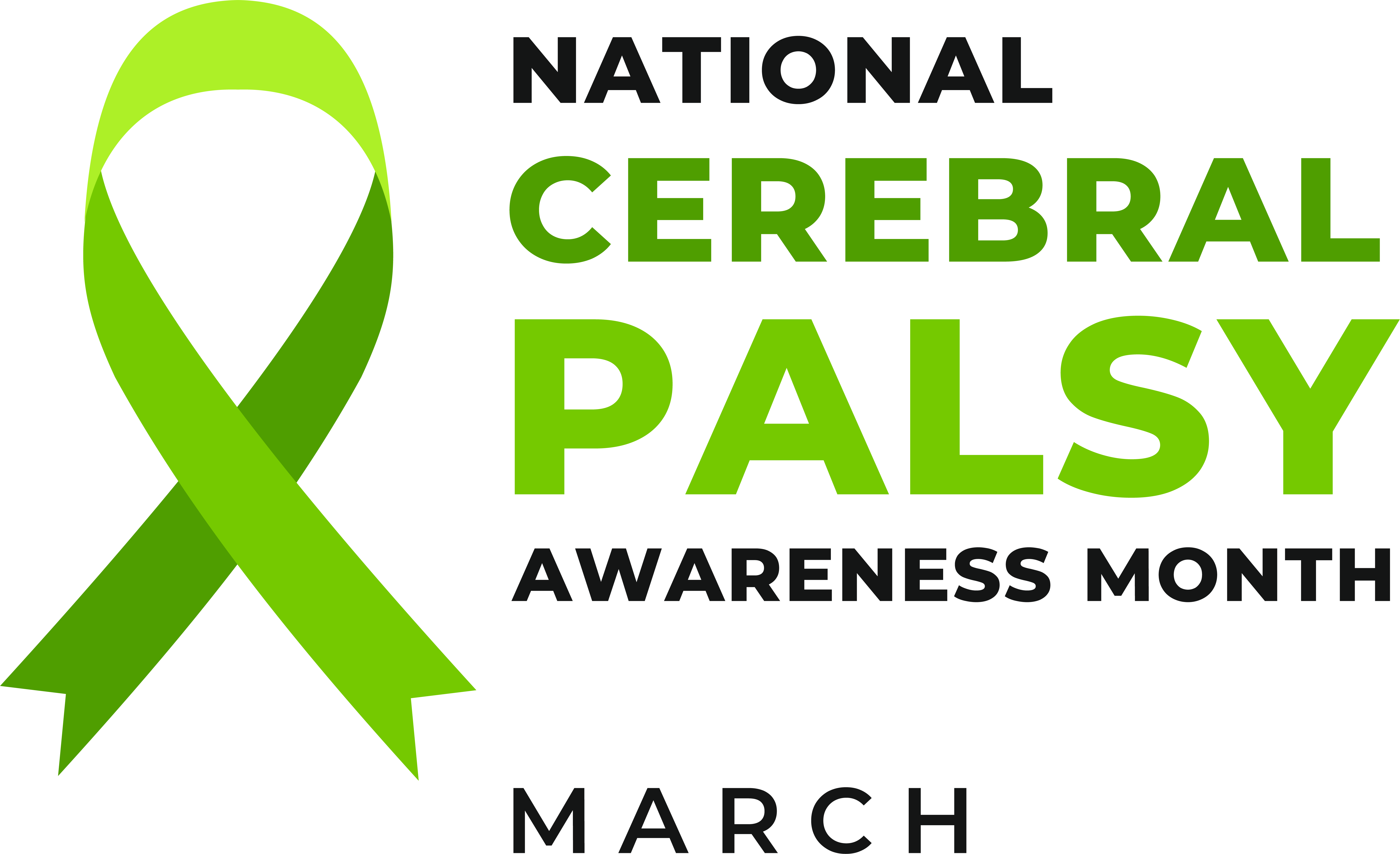Did you know that March is National Cerebral Palsy Awareness month?
- Mar 16, 2022
- 0 Comments


Gabriel Ryan, School Health Blog Writer and Contributor
Did you know that March is National Cerebral Palsy Awareness month?
In 2006 an initiative was started by a Cerebral Palsy advocacy group with a goal to push for positive change in education programs, the healthcare system, and the job market, to give opportunities to those with Cerebral Palsy. This awareness effort started from a group of parent volunteers that realized there were days celebrated for other disabilities and initiatives, but there was not a month or day that celebrated Cerebral Palsy. The hope through this awareness day is to bring attention to Cerebral Palsy and raise money for research that could benefit the lives of those with Cerebral Palsy.
The designated color for Cerebral Palsy awareness is green. Why the color green? According to an article posted by PRC-Saltillo, “the color green was chosen to reflect youthfulness and new growth, as well as hope for advancements in treatment and acceptance.” The #GoGreen4CP hashtag was created to engage communities on social media platforms like Facebook, Instagram, and Twitter to become more aware of this effort.


A brief definition of Cerebral Palsy offered by CerebralPalsyGuide.com includes the following informative information. “Cerebral Palsy is a group of disorders that affect normal movement in different parts of the body. This condition can cause problems with posture, manner of walking (gait), muscle tone, and coordination of movement. The word “cerebral” refers to the brain’s cerebrum, which is the part of the brain that regulates motor function. “Palsy” describes the paralysis of voluntary movement in certain parts of the body. There are several types of cerebral palsy that are characterized by the location of the brain injury. Symptoms can vary depending on where and how badly the brain was damaged.”
National Today, shares 5 Important Facts About Cerebral Palsy on their website:
1. It is not a disease or sickness: This condition is not a disease or sickness — it is not contagious and cannot be reversed, although some symptoms can be lessened with physiotherapy, speech therapy, or occupational therapy.
2. Everyone with cerebral palsy is unique: No two people with cerebral palsy are the same and they are equally deserving of love and care as those who do not [have] this condition.
3. There is a special awareness day: In addition to having an entire month dedicated to Cerebral Palsy, March 25th is an annual day to recognize and support those living with cerebral palsy.
4. 17 million are affected around the world: 17 million people are living with cerebral palsy, which is equal to the entire population of the Netherlands.
5. Opportunities are needed: People with cerebral palsy do not need sympathy — they need opportunities to live their lives as independently as possible.
You can complete a google search about Cerebral Palsy and find resources and supports in your state and in your community. A long-standing national resource is the United Cerebral Palsy: www.ucp.org. The important thing to keep in mind is that Cerebral Palsy is different for everyone. Many of the articles about Cerebral Palsy and the related awareness month describe it as a campaign to express support for those “suffering” from Cerebral Palsy. Perhaps some out there feel this way, however my friends with Cerebral Palsy and myself included, do not label ourselves as “suffering” from Cerebral Palsy. We work hard to live our lives like anyone else, going places, having friends, seeking meaningful and gainful employment, etc.
Through these initiatives of awareness and advocacy, it is my hope that more research and advancements in technology will continue to improve the lives of people with Cerebral Palsy and other disabilities.
Remember - Wear your green, March 25th to show your support for children and adults diagnosed with Cerebral Palsy!
